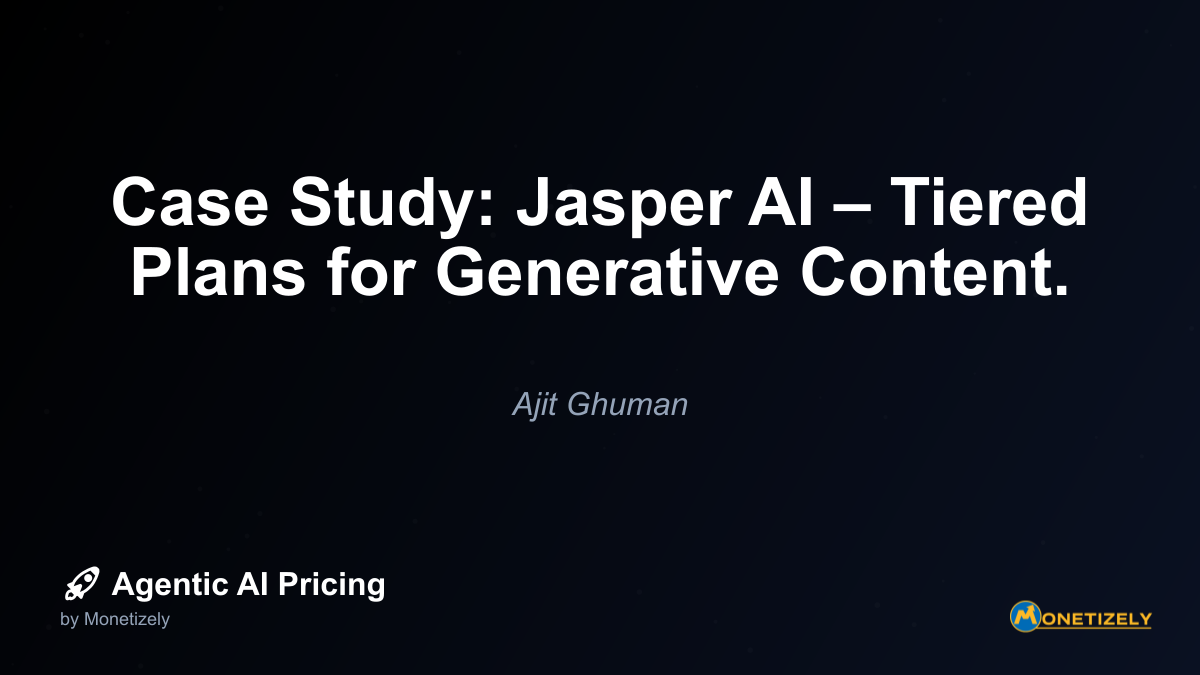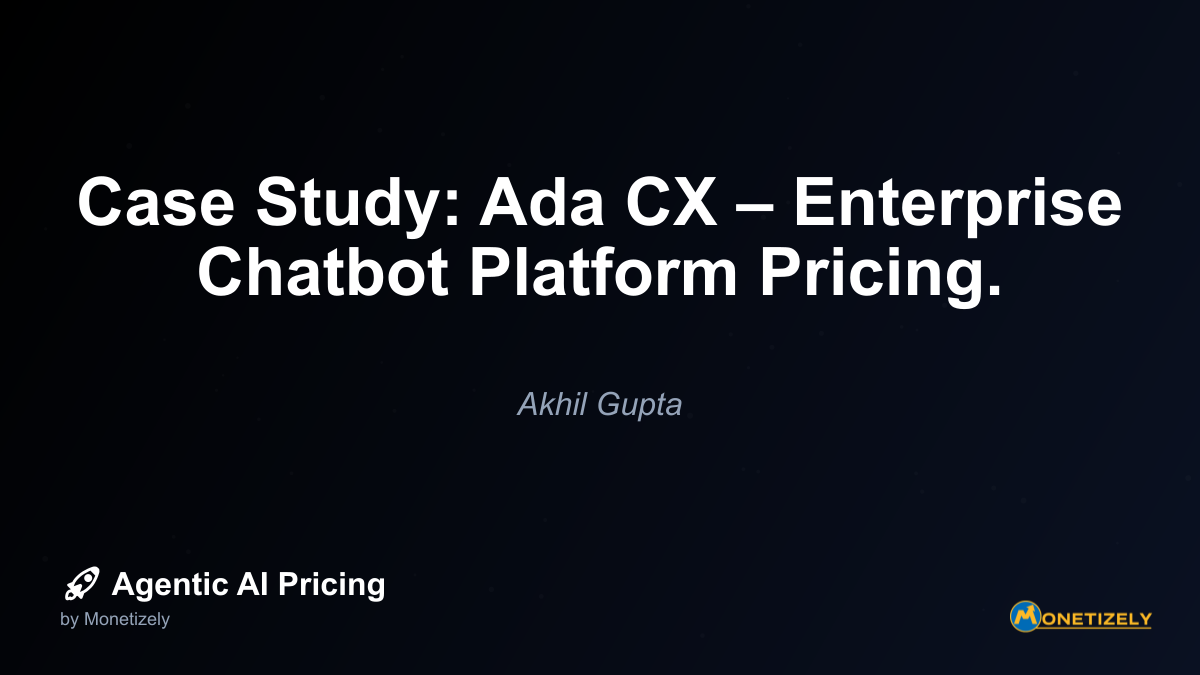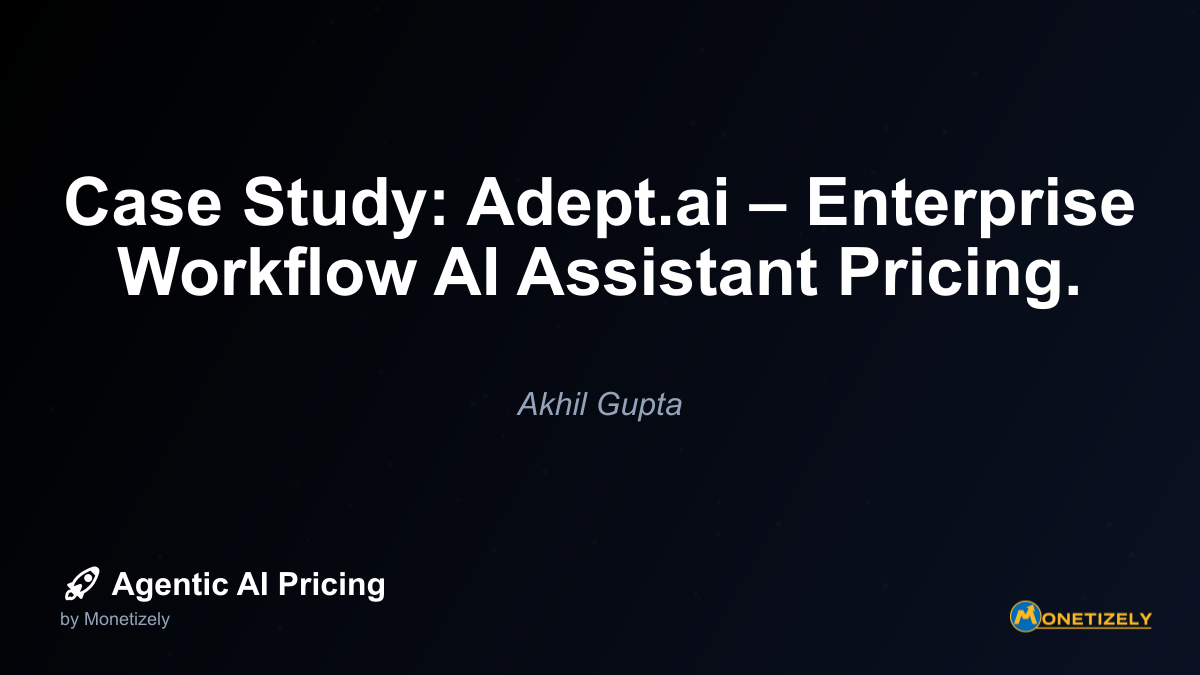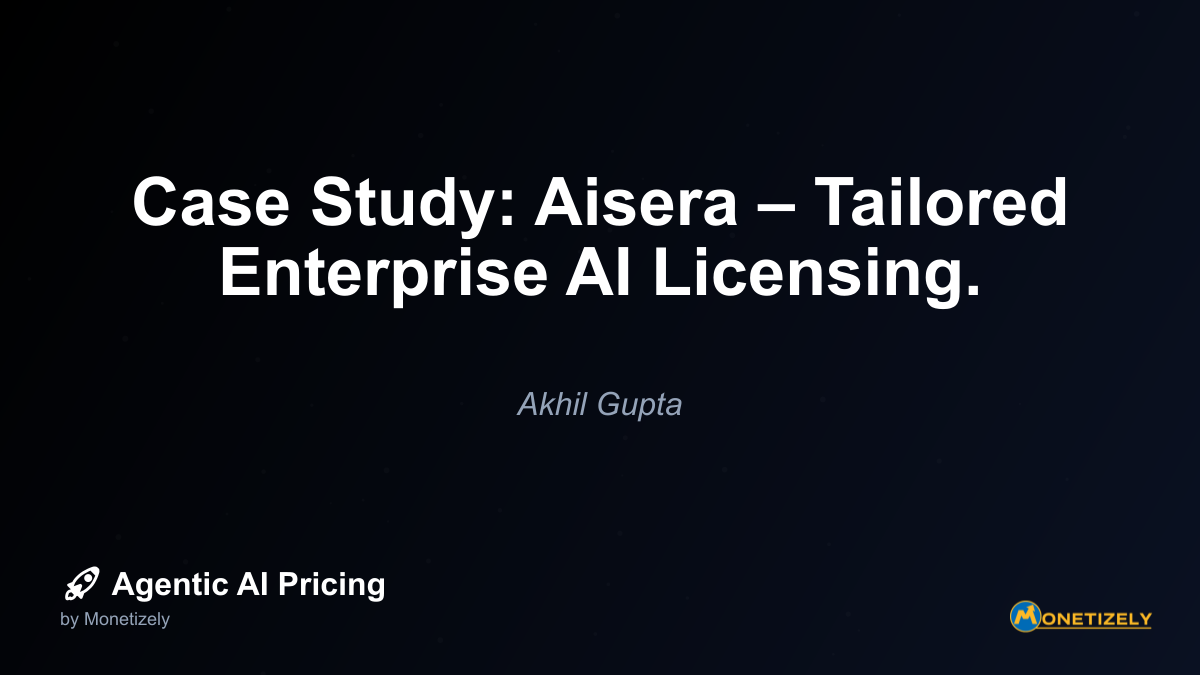· Ajit Ghuman · Case Studies · 5 min read
Case Study: Jasper AI – Tiered Plans for Generative Content.
AI and SaaS Pricing Masterclass
Learn the art of strategic pricing directly from industry experts. Our comprehensive course provides frameworks and methodologies for optimizing your pricing strategy in the evolving AI landscape. Earn a professional certification that can be imported directly to your LinkedIn profile.

Lessons from Jasper’s Pricing Model for Other Generative AI Tools
Jasper’s approach offers several valuable lessons for other generative AI tools developing pricing strategies:
1. Align Usage Metrics with Customer Value Perception
Jasper’s choice of word count as a primary metric works because it directly correlates with the value customers derive from the tool. Other generative AI tools should identify similar value-aligned metrics - whether that’s images generated, minutes of audio produced, or complex tasks completed.
2. Layer Feature Differentiation on Top of Usage Tiers
While usage limits provide a foundation, Jasper demonstrates how feature differentiation can enhance tier separation and target specific customer segments. This dual approach creates more robust differentiation than either strategy alone.
3. Create Clear Upgrade Triggers
Jasper’s model includes natural triggers that prompt customers to upgrade: hitting word count limits, adding team members, or needing more advanced features. These clear transition points reduce friction in the upgrade decision process.
4. Balance Accessibility and Premium Positioning
By offering entry points for individuals while maintaining premium enterprise tiers, Jasper captures market share across segments without sacrificing brand positioning. This balance is particularly important in the rapidly evolving generative AI space.
For companies developing pricing strategies for multi-tier AI products, Jasper’s approach demonstrates how to balance simplicity, value alignment, and market segmentation.
How Jasper’s Model Has Evolved with Market Maturity
Jasper’s pricing evolution reflects broader trends in the generative AI market:
Initial Focus on Usage Limits
Early versions of Jasper’s pricing emphasized word count limits as the primary differentiator, reflecting the nascent market’s focus on raw output capacity.
Addition of Collaboration Features
As the market matured and team adoption increased, Jasper added robust collaboration features to higher tiers, recognizing the shift from individual to organizational use.
Enterprise Customization
The latest evolution includes more customization options for enterprise clients, acknowledging that large organizations have unique requirements that standard tiers cannot fully address.
Integration Capabilities
As the AI tool ecosystem has expanded, Jasper has incorporated integration capabilities into higher tiers, recognizing that standalone tools provide less value than those that connect to existing workflows.
This evolution demonstrates how generative AI pricing strategies must adapt as markets mature, customer needs evolve, and competitive landscapes shift.
Challenges and Limitations of Jasper’s Pricing Approach
While generally effective, Jasper’s pricing model does present certain challenges:
Complexity vs. Simplicity Balance
As Jasper has added more features and tier differentiators, their pricing has become more complex. This complexity can create friction in the purchase decision process, particularly for new users unfamiliar with AI writing tools.
Word Count as an Imperfect Metric
While intuitive, word count is an imperfect value metric. Some users might generate high word counts of low-quality drafts, while others might produce fewer but more refined outputs. This disconnect between quantity and value can create misalignment for certain user segments.
Competitive Pressure on Entry-Level Pricing
The proliferation of AI writing tools has created significant price competition at the entry level, potentially squeezing margins on Jasper’s Creator plan and pushing the company to focus more on enterprise customers.
Adaptation to LLM Advancements
As large language models advance rapidly, Jasper faces the challenge of maintaining premium pricing while competing with increasingly capable free or low-cost alternatives built on open models.
Future Directions for Jasper’s Pricing Strategy
Looking ahead, several potential evolutions of Jasper’s pricing strategy seem likely:
More Granular Usage Metrics
Rather than simple word count limits, Jasper might move toward more sophisticated usage metrics that better reflect value creation - perhaps differentiating between content types or quality levels.
Value-Based Enterprise Pricing
For larger clients, Jasper may shift toward ROI-based pricing that ties costs more directly to business outcomes like marketing performance or time saved rather than simple output volume.
Specialized Vertical Solutions
Jasper has already begun developing more specialized solutions for specific industries and use cases. This specialization could lead to vertical-specific pricing that better reflects the unique value propositions for different customer segments.
AI Agent Integration
As the market moves toward more agentic AI systems, Jasper will likely incorporate agent-based features that automate entire content workflows rather than just generation. This evolution would necessitate new pricing approaches that capture the increased value of autonomous operation.
Conclusion: The Strategic Implications of Jasper’s Pricing Model
Jasper AI’s tiered pricing strategy offers a valuable case study in how generative AI tools can effectively monetize their capabilities while serving diverse customer segments. Their approach demonstrates several key principles:
Usage-based metrics provide an intuitive foundation for pricing that aligns with customer value perception.
Feature differentiation enhances segmentation beyond what usage limits alone can achieve.
Clear upgrade paths create natural growth opportunities as customer needs evolve.
Balancing accessibility with premium positioning allows for broad market penetration without sacrificing revenue potential.
For businesses developing or refining pricing strategies for generative AI tools, Jasper’s model offers a proven template that can be adapted to various content types and customer segments. The core principle remains consistent: align pricing structure with customer value perception while creating clear differentiation between customer segments with distinct needs and willingness to pay.
As the generative AI market continues to mature, we can expect further refinement of these pricing approaches, with increasing emphasis on value-based metrics, workflow integration, and specialized solutions for specific use cases. Companies that successfully navigate this evolution will be well-positioned to capture the significant value being created by advances in generative AI technology.
Co-Founder & CEO
Ajit is the author of Price To Scale, a top book on SaaS Pricing and is the Founder of Monetizely. Ajit has led and worked in pricing and product marketing at firms like Twilio, Narvar and Medallia. His work has been featured in Forbes and VentureBeat. Ajit regularly consults with software companies from Seed stage to post-IPO on pricing strategy. Ajit is also a highly-rated co-instructor for 'The Art of SaaS Pricing and Monetization' on Maven.
Pricing Strategy Audit
Let our experts analyze your current pricing strategy and identify opportunities for improvement. Our data-driven assessment will help you unlock untapped revenue potential and optimize your AI pricing approach.




